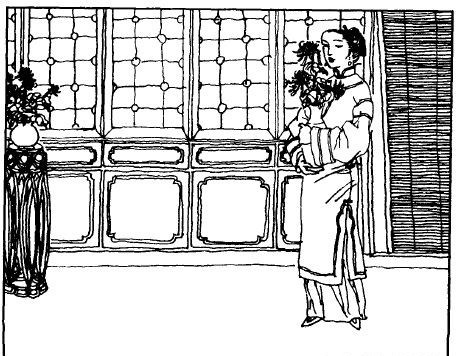Six Records of a Floating Life (Chapter two: Relaxation of Leisure 04)
When arranging miniature sceneries with flowers and stones in a pot, design so that a small one could suggest a painting, and a big one the infinite. One should make it so that, with a pot of tea, one could lose oneself in a world of imagination; and only this kind should be kept in one's private studio for enjoyment.
Once I planted some narcissus and could not find any pebbles from Lingpi for use in the pot, and I substituted them with pieces of coal that looked like rocks. One can also take five or seven pieces of yellow-brimmed white cabbage of different size, whose core is white like jade, and plant them in sand in an oblong earthen basin, decorated with charcoal instead of pebbles. The black of the charcoal will then contrast vividly with the white of the cabbage, quite interesting to look at.
It is impossible to enumerate all the possible variations, but if one exercises one's ingenuity, it will be found to be an endless source of pleasure. For instance, one can take some calamus seeds in the mouth, chew them together with cold rice soup, and blow them on to pieces of charcoal. Keep them in a dark damp place and fine little calamus will grow from them.
These pieces of charcoal can then be placed in any flower basin, looking like moss-covercd rocks. Or one can take some old lotus seeds, grind off slightly both ends, and put them in an egg-shell, making a hen sit on it together with other eggs. When the little chickens are hatched, take the egg out also and plant the old lotus seeds in old clay from swallows' nests, prepared with twenty per cent of ground asparagus. Keep these then in a small vessel filled with river water, and expose them to the morning sun. When the flowers bloom, they will be only the size of a wine cup, while the leaves will be about the size of a bowl, very cute and beautiful to look at.
As to the planning of garden pavilions, towers, winding corridors and out-houses, the designing of rockery and the training of flower-trees, one should try to show the small in the big, and the big in the small, and provide for the real in the unreal and for the unreal in the real. One reveals and conceals alternately, making it sometimes apparent and sometimes hidden. This is not just rhythmic irregularity, nor does it depend on having a wide space and great expenditure of labour and material.
Pile up a mound with earth dug from the ground and decorate it with rocks, mingled with flowers; use live plum-branches for your fence, and plant creepers over the walls. Thus one can create the effect of a hill out of a flat piece of ground. In the big, open spaces, plant bamboos that grow quickly and train plum-trees with thick branches to screen them off. This is to show the small in the big. When a courtyard is small, the wall should run in a series of convex and concave lines, decorated with green, covered with ivy and inlaid with big slabs of stone with inscriptions on them.
Thus when you open your window, you seem to face a rocky hillside, alive with rugged beauty. This is to show the big in the small. Contrive so that an apparently blind alley leads suddenly into an open space and a closet-like door forms the entrance into an unexpected courtyard. This is to provide for the real in the unreal. Let a door lead into a blind courtyard and conceal the view by placing a few bamboo trees and a few rocks before it. Thus you suggest something which is not there. Place low balustrades along the top of a wall so as to suggest a roof garden. This is to provide for the unreal in the real.




Comments
Post a Comment